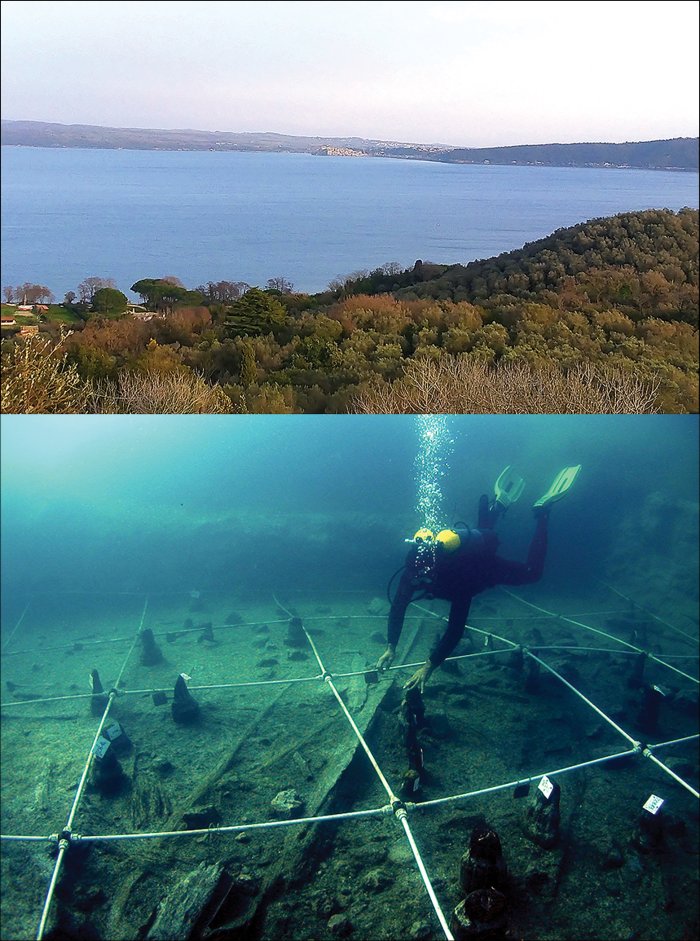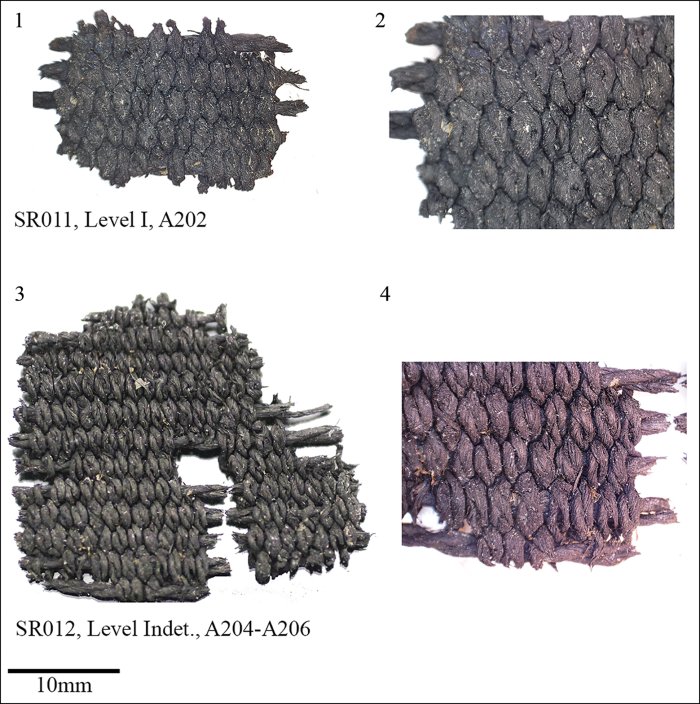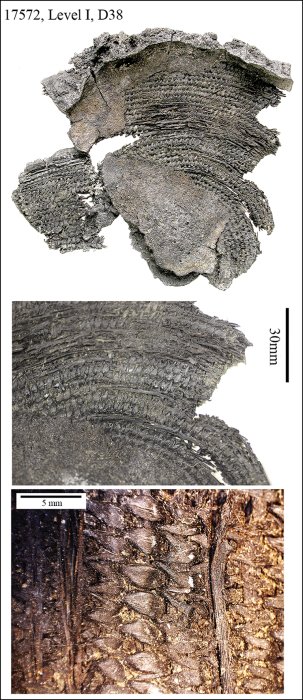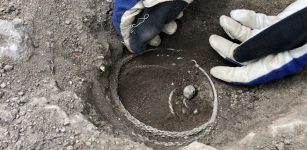Rare Neolithic Underwater Textiles And Dwellings Discovered At La Marmotta Near Rome
Jan Bartek - AncientPages.com - Underwater archaeologists have discovered rare, well-preserved cloth fragments, dwellings, baskets, weaving swords, and much more while examining a site near Rome, Italy.
The submerged settlement La Marmotta in the comune of Anguillara Sabazia, approximately 30km north-west of Rome was discovered in 1989, and after many years of underwater investigations, scientists collected many valuable artifacts that give a unique glimpse into life in this region, more than 8,000 years ago.
Credit: Antiquity - https://doi.org/10.15184/aqy.2023.21
"Archaeological investigation of Circum-Alpine lake, or pile, dwellings has afforded unprecedented insight into Neolithic and Bronze Age societies.
Two decades of excavation at La Marmotta have identified more than a dozen dwellings and an enormous assemblage of organic remains. Here, the authors present an overview of the textiles, basketry and cordage recovered, and the tools used to manufacture them. The assemblage paints a more complete picture of the technological expertise of Neolithic societies and their ability to exploit and process plant materials to produce a wide range of crafts," the research team writes in the journal Antiquity.
Submerged Neolithic Dwellings
Why the La Marmotta settlement was abandoned is unknown but it's possible a sudden rise in the water level of the lake forced people to leave their homes.
"Whatever the reason, the inhabitants left behind all their possessions, including tools, food-preparation vessels and the canoes. Numerous building elements and wooden objects were also found to have been burnt, similar to what has been observed in other submerged villages, such as in some Alpine lake sites (Neolithic, Switzerland) and Must Farm (Bronze Age, UK). Future geomorphological studies may help to determine precisely what happened at the end of the site's occupation," the researchers write in their study.
Archaeological investigation of the site has documented "several thousand wooden piles or support posts on the lakebed; the spatial distribution of these piles permits the identification of a minimum of 13 house structures arranged parallel to one another on the Neolithic lake shore. These dwellings—8 to 10m long and approximately 6m wide—were rectangular, with internal partition walls and a central hearth. Five wooden canoes, some found next to the houses, are currently the only known examples from the Neolithic Mediterranean.
Lake Bracciano; bottom) excavation of the site of La Marmotta (photographs by Museo delle Civiltà-Mario Mineo). Image source: Antiquity - https://doi.org/10.15184/aqy.2023.21
The site's excellent preservation conditions have conserved numerous wooden objects, such as bows, mattocks, sickles, spoons and containers. These organic finds are complemented by thousands of lithic tools made from flint and obsidian, numerous stone axes, adzes and querns, and an array of bone tools." 1
Examinations of the raw materials recovered from the site demonstrate that the La Marmotta community participated in extensive and complex exchange networks with populations hundreds of kilometers away.
Extraordinary Neolithic Textile Fragments Found Underwater
Scientists are especially impressed with four extraordinary small textile fragments that researchers at the University of Copenhagen are currently analyzing. The Neolithic textiles are most likely made of plant fibers.
Textile fragments found at La Marmotta (photographs by J.F. Gibaja). Image source: Antiquity - https://doi.org/10.15184/aqy.2023.21
"In total, 28 fragments of cord and two lengths of thread have been identified at La Marmotta. Cords such as these could be made using one of three methods—twisting, braiding or knotting short fibres—and used for a wide variety of purposes. The preserved examples vary considerably in size, from small, short fragments to cords several centimetres in length; in some cases, they are rolled or wound in balls and cannot therefore be measured. They also vary in their diameters, from extremely fine threads to durable ropes capable of resisting heavy weights and tensions. Taxonomic identification of the plant fibres used to produce these cords and threads may shed further light on their usage." 1
Other Tools And Artifacts Found At The Submerged Site Of La Marmotta
The research team has also discovered thousand-year-old baskets. Neolithic farming societies produced baskets regularly which were used for gathering and processing food.
At the site, scientists discovered spindles, spindle whorls, loom weights, and weaving tools such as weaving swords. Several of the submerged tools were used to prepare plant fibers for cord making and basketry. Researchers came across evidence the residents of this Neolithic settlement built canoes that were almost 11 meter in length.
According to scientists," the excellent preservation of wooden structures and objects of various perishable materials creates a much fuller understanding of the technical complexity of these early farming societies, perhaps even pointing to the existence of craft specialists."
Basket from La Marmotta, with remains of food preserved in the bottom (photographs by Juan F. Gibaja). Image source: Antiquity - https://doi.org/10.15184/aqy.2023.21
"inds such as these point to the central importance of these technologies not only at La Marmotta but almost certainly at other less well-preserved sites. Even so, the 28 fragments of cordage from La Marmotta can only represent a small fraction of the material culture, including clothes, tools and containers that were made and used by the site's inhabitants, and we still lack completely many other objects whose presence is only implied, such as looms.
See also: More Archaeology News
Nonetheless, the evidence from submerged sites in various parts of Europe clearly indicates that Early Neolithic societies were highly knowledgeable about the varied plants resources to which they had access and the methods required to process them. The full publication of La Marmotta in due course will establish the site as one of the highest importance for the study of European prehistory," the research team concludes in their study.
Written by Jan Bartek - AncientPages.com Staff Writer
Expand for references1. Mineo, M., Mazzucco, N., Rottoli, M., Remolins, G., Caruso-Ferme, L., & Gibaja, J. (2023). Textiles, basketry and cordage from the Early Neolithic settlement of La Marmotta, Lazio. Antiquity, 97(392), 314-330. doi:10.15184/aqy.2023.21
























